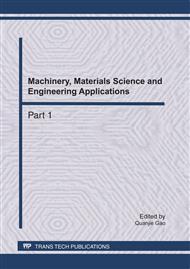p.832
p.836
p.841
p.847
p.853
p.858
p.864
p.869
p.874
High-Rise Fire Escape Device’s Design and Analysis
Abstract:
For the current lack of convenient, reliable and safe lifting of the fire escape equipment, design a device along the rope, using functions with self-locking worm gear structure. Then assess the strength of the contact state and reliability of the structure, use ANSYS to analysis the contact stress and dynamic characteristics. Finally, improve the winch device design to increase the safety factor. The check calculation and experiments showed that the device can be safely hoisting the target.
Info:
Periodical:
Pages:
853-857
Citation:
Online since:
April 2011
Authors:
Price:
Сopyright:
© 2011 Trans Tech Publications Ltd. All Rights Reserved
Share:
Citation:


